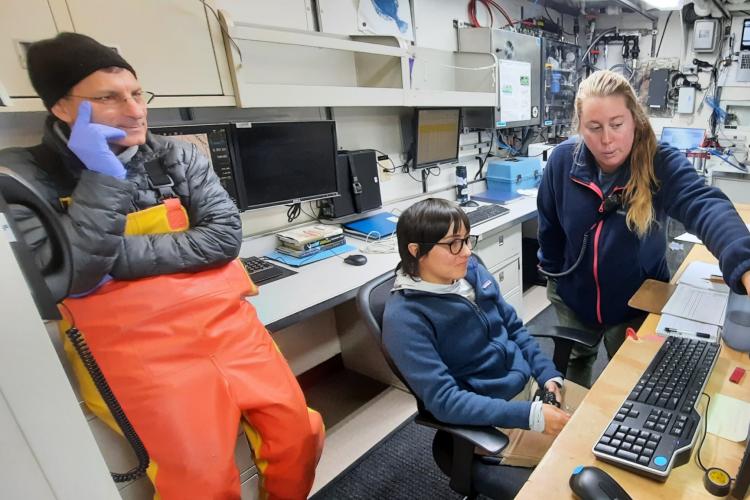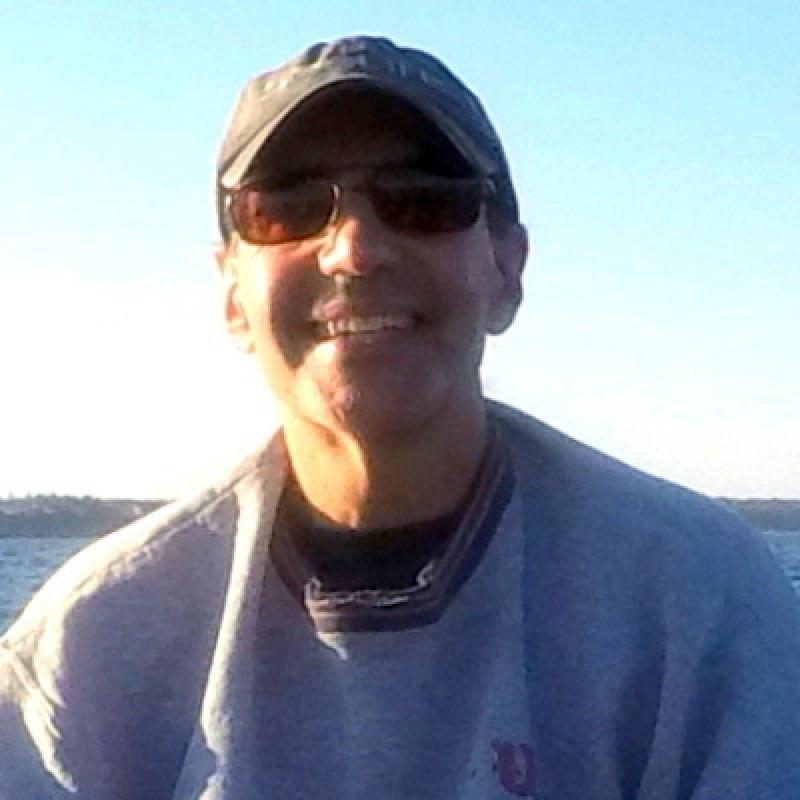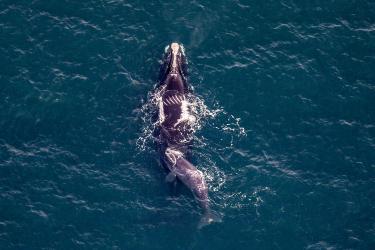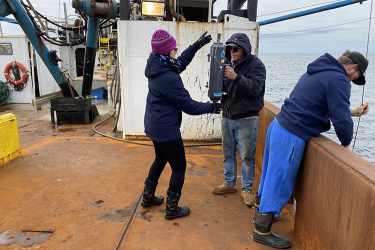The NOAA Ship Henry Bigelow sailed from the Newport Naval Station on June 8. Our mission: to monitor and document changes in the hydrography and environment of the northeast continental shelf of the United States. We’ll stop at 150 stations between Nova Scotia and Cape Hatteras.
First we traveled across Narragansett Bay to the naval anchorage between Gould Island and the Newport Bridge so that Mike Jech and his colleagues could calibrate the vessel’s acoustic transducers. These transducers emit brief sound waves that bounce off of the seafloor and objects in the water, allowing us to “see” what is there. After they finished their work, the vessel weighed anchor and we left Narragansett Bay.
We have completed 22 stations since then, mostly plankton tows and bongo tows but with several Conductivity Temperature Depth rosette casts as well. On Saturday evening, June 10 we are now about 70 miles off Delaware Bay as we work our way south along the outermost stations of our cruise track, which is taking us to Cape Hatteras.
All Systems “Go”
Our flow-through systems are all functional, including those that measure carbon dioxide levels and acidity in seawater, and the one that provides images of phytoplankton. It’s being monitored by fishery biologist Audy Peoples.
Chris Taylor is overseeing the daily submersible radiometer readings to measure underwater light levels. We’ve done two of those so far, each with five casts to 10 meters followed by a cast down to a 1 percent light level depth. The chief boatswain Steve York mounted a light sensor for this system on an upper deck to monitor the daylight associated with each cast.
We are collecting and freezing plankton samples. We are finding pteropods, a planktonic snail, in many of the samples. We dry them out in a special oven we have on board. They will be used to study the effect of increasing ocean acidity on their shell formation. Amanda Jacobsen is collecting and drying out samples for her graduate research, and Chris Taylor is measuring oxygen levels in selected water samples from the rosette casts. The oxygen sensor on the Seabird 19+ profiler is working very well, and it’s interesting to get water column oxygen profiles in addition to depth, temperature and salinity on every bongo tow!
A Platform for Learning
Everyone is getting along well, including students Morgan Hadley from Endicott College and MacKenzi Kimball from University of New England. They are learning new things every day. In addition to our two survey techs, we have a third survey tech-in-training, Marina Rowen, who is learning about our operations while on watch with our chief survey tech, Katey McGinniss.
Our bird and marine mammal observers, Allison Black and Nick Metheny, have been documenting many common dolphins and humpback whales along parts of our track. Perhaps the baleen whales are responding to the amazingly large quantities of Calanus copepods that we have gotten in many of our tows, which I found surprising because we are so far south.
Gratitude from the Chief Scientist
I am grateful for all the dedicated people out here. With so many tasks to perform, it is wonderful to have the work divided up among different people. Also some thank yous to those whose combined efforts allowed us to successfully get underway:
- Research biologist Harvey Walsh joined us at a moment’s notice the day before we sailed to fill a vacant spot on the roster
- Physical science tech Tamara Holzwarth-Davis talked us through a communications port issue we had with the water sampler rosette on the day before we sailed
- Physical science tech Cristina Bascunan boarded the Bigelow at 5 a.m. before sailing to make the final connections and discovered issues with our communications port and adapter cable
- Our survey tech, Justin Dasilva, drove to the Bourne Bridge to get an adapter cable that we needed to make the set-up complete
Jerry Prezioso
Chief Scientist for the Spring Ecosystem Monitoring Survey HB2302








